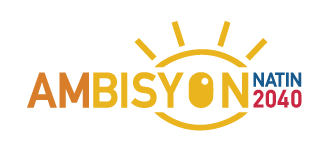Jed Macapagal (Malaya Business)
The Department of Agriculture (DA) is pushing for the crafting of a roadmap for the seaweed industry for the year 2017-2022 to help farmers establish a sustainable and competitive seaweed industry amid rising demand overseas.
In a meeting with Irish seaweed company Ocean Harvest Technology Ltd. (OHT) last week, DA secretary Emmanuel Piñol directed fisheries undersecretary Eduardo Gongona to come up with a roadmap that will lay down all the programs of the Bureau of Fisheries and Aquatic Resources (BFAR) for the National Seaweed Program.
Specifically, Piñol wants to utilize idle fish ponds and recommends putting up a processing facility to help organize the farmers.
Simon Faulker, OHT quality and resource manager, presented to the DA a proposal to develop and commercialize ulva, also known as sea lettuce, in the country to process it into animal feeds.
“We wanted to purchase dry seaweeds or the ulva to your local farmers. Ulva is considered nuisance but it is good source of minerals and vitamins, which is good in making animal feeds,” Faulker said.
OHT eyes harvesting ulva in Cebu, Bohol, Pampanga and Tawi-Tawi – sites it already visited last January.
The DA said ulva can also be found in Pangasinan, La Union and Ilocos Norte.
If approved, DA said, the company plans to purchase about 3,000 tons of dried seaweed which will be processed in its facility in Vietnam.The by-products are already marketed in some parts of the United States and Canada.
Irma Ortiz, National Seaweed coordinator, said during the meeting BFAR wants to revive the country as the world’s leading producer of seaweeds such as Euchema and Kappaphycus.
“BFAR aims to increase seaweed production by at least five percent annually from 2017 to 2022,” she said.
However, Ortiz said the industry is challenged by limited access to credit and market, limited source of alternative income from seaweeds dependent mostly to selling raw dried seaweed, research and development on seaweed applications, promotion of available seaweed products, and lack of sustainable and climate-proof agri-fishery facilities in the country.
BFAR has implemented programs to address these challenges such as trainings for farmers and production of climate-resilient species, entrepreneurship training, and promotion of community-based product champions.
Based on Philippines Statistics Authority data, Indonesia overtook the country’s production volume in 2008. It produced 2.79 million metric tons in 2009, 60 percent higher than the country’s 1.73 MMT.
Last year, the Philippines produced 1.4 MMT of seaweed, 11 percent lower than the 1.57 MMT output in 2015.
